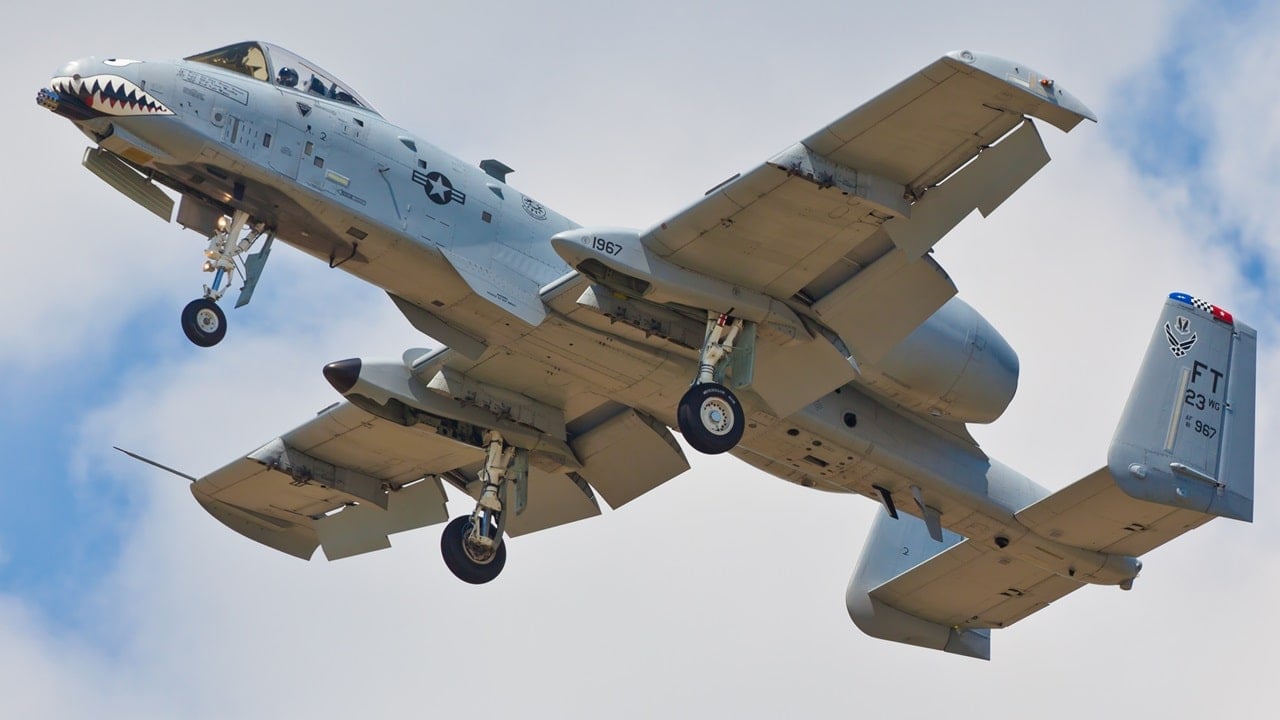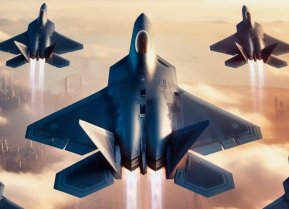How the A-10 Warthog Just Became a 'Flying Tiger'
The U.S. Air Force's A-10 Thunderbolt II, nearing the end of its service, recently received a fresh application of its iconic shark teeth nose art by the 23rd Maintenance Squadron at Moody Air Force Base, Georgia. This distinctive look not only enhances the aircraft's aesthetic but also serves as a powerful symbol of intimidation and strength.
Summary and Key Points: The U.S. Air Force's A-10 Thunderbolt II, nearing the end of its service, recently received a fresh application of its iconic shark teeth nose art by the 23rd Maintenance Squadron at Moody Air Force Base, Georgia. This distinctive look not only enhances the aircraft's aesthetic but also serves as a powerful symbol of intimidation and strength.

-The nose art, inspired by the WWII Flying Tigers, requires a detailed, multi-step painting process involving washing, sanding, masking, and applying multiple colors.
-The tradition of the shark teeth design continues to symbolize the A-10's formidable close air support role and connection to its historical roots.
The A-10 Warthog Gets a Makeover
The Fairchild Republic A-10 Thunderbolt II is a bit long in the tooth, and its days in service with the U.S. Air Force will end in the coming years. But airmen at the 23rd Maintenance Squadron at Moody Air Force Base, Georgia, recently offered a reminder that the aircraft is still a highly capable warbird. The airmen spent four days applying Flying Tigers nose art to A-10C Thunderbolt II tail number A213, ensuring the plane looks just as deadly as it performs.
"The distinctive appearance of the military aircraft is not just a matter of aesthetics, but a crucial aspect of our operational effectiveness – projecting power and intimidating adversaries," wrote Airman 1st Class Leonid Soubbotine of the 23rd Wing Public Affairs at Moody AFB. "The unmistakable shark teeth markings on aircraft from the 23d Wing serves as a visual deterrent, striking fear into the hearts of our enemies and instilling confidence in our allies."
Repainting is part of routine maintenance for the A-10 Warthog. Painting the shark teeth reportedly involved washing, sanding, and masking before applying the multiple colors that achieve the iconic look.
"For me it's important because the A-10 teeth are iconic in their own way," explained Tech. Sgt. Mark King, 23rd Maintenance Squadron corrosion manager. "It's even been adopted by the fashion industry and the teeth are everywhere. We're the only ones in the Air Force that actually apply it to our nose art and it means a lot to be able to represent it."
As noted, it is a multi-step, week-long process. It involves a specialized jet-sized paint booth and a large printer to produce the necessary decals and stencils. Then there is the actual painting, which involves trained airmen who are also talented artists.
"First and foremost, before it even rolls into the paint barn, it will be washed," added Staff Sgt. William Rogers, 23rd Maintenance Squadron aircraft structural maintenance craftsman. "The next steps are sanding and masking everything off that is not going to get painted to avoid overspray. After that, we mask and re-mask the jet – putting it through the multiple colors, stencils and different curing times."
About the Shark's Teeth Smile
The shark's notorious teeth are almost always associated with the "Flying Tigers," the American volunteer pilots who flew for the Chinese Nationalist government in its war against Japan.
They flew the Curtiss P-40B Warhawk marked with Chinese insignia, but under American control. Known as the First American Volunteer Group (AVG) of the Republic of China Air Force, but more commonly remembered as the Flying Tigers, the pilots were recruited under President Franklin Roosevelt's authority before Pearl Harbor. Their mission was to attack the Japanese and defend the Republic of China. The AVG first flew in combat on December 20, twelve days after Pearl Harbor.
Today, it is almost impossible to see a surviving Curtiss P-40 without the famous shark smile painted on the front. Most who know anything about World War II would be quick to point out that the iconic imagery painted on the front of the aircraft was started by the Flying Tigers – although why a tiger (flying or otherwise) would wear the face of a shark has never been explained.
The answer could be that it wasn't actually the Flying Tigers who first adopted the menacing smile with sharp teeth. The design was first employed not in the jungles of Burma where the AVG was first based, but in the deserts of North Africa. The Royal Air Force (RAF) No. 112 Squadron, fighting in North Africa, received its Curtiss fighters in July 1941, and after adopting a few iterations of nose art, finally settled on the definitive design. The unit eventually earned the nickname The Shark Squadron.
AVG pilot Charles Bond reportedly saw a photo of the Curtiss with the nose art on the cover of The Illustrated Weekly of India, and soon suggested to Chennault that the aircraft of the First Pursuit Squadron be painted with a similar design. The AVG commander's response was a blunt, "No."
Chennault wanted all the AVG aircraft to carry the markings. Quickly, many pilots and ground crewmen pitched in to paint the aircraft, Smithsonian magazine reported. AVG pilot and memoirist R.T. Smith said what many of the Flying Tigers thought at the time, "That looks mean as hell."

Regardless of whether the smile can trace its lineage back to the Flying Tigers or the RAF, it does look "mean as hell" on the A-10C!
"It feels great knowing that these jets are providing close air support for the troops on the ground," Tech. Sgt. King noted. "We're the only ones with those teeth, so they know who we are, where we’re from and what we do. Once they see the teeth, they know that Moody is here!"
Author Experience and Expertise: Peter Suciu
Peter Suciu is a Michigan-based writer. He has contributed to more than four dozen magazines, newspapers, and websites with over 3,200 published pieces over a twenty-year career in journalism. He regularly writes about military hardware, firearms history, cybersecurity, politics, and international affairs. Peter is also a Contributing Writer for Forbes and Clearance Jobs. You can follow him on Twitter: @PeterSuciu. You can email the author: [email protected].
Image Credit: Creative Commons.


